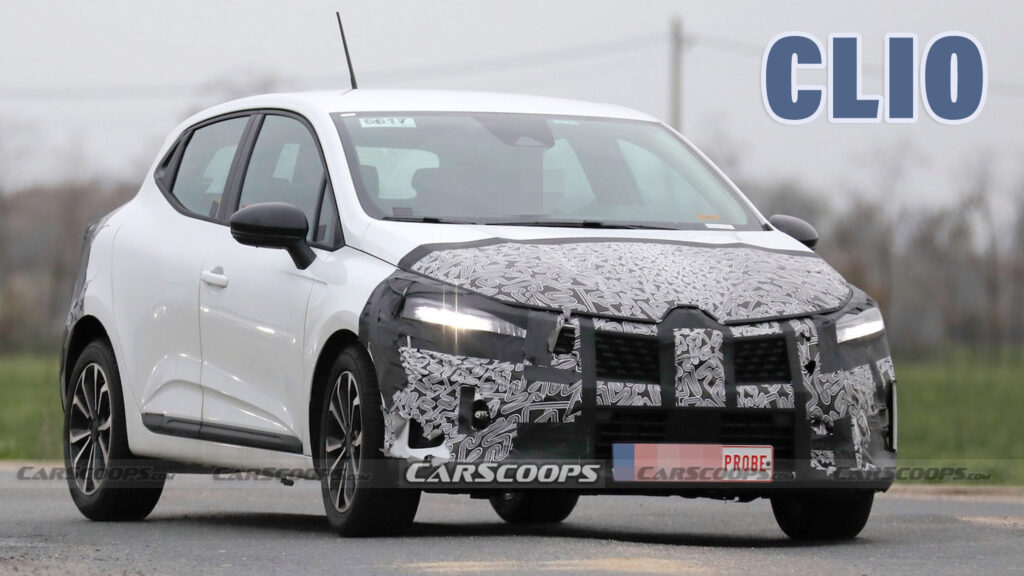Four years have passed since Renault introduced the fifth-generation Clio at the 2019 Geneva Motor Show, and the word from France is that a facelifted model will hit our screens later this month, and Europe’s streets soon after.
We’ve already had a sneaky peek at the finished result thanks to spy video that emerged in February showing the updated car being filmed for promotional material alongside a camera car in Turkey. But these are the first shots we’ve seen of a prototype being tested by Renault’s R&D team on real roads.
The camouflage around the nose hides boomerang-shaped DRLs that we know hang down below the headlights because we saw them on the undisguised car being filmed. But we can clearly see the facelifted car’s very different grille treatment. Can’t remember what the current one looks like? Renault’s tests team provides a real helping hand here by following the new car with a pre-facelift example allowing us to easily make out how much wider the new grille is.
Related: All You Need To Know About The 2024 Renault Clio Facelift

The metal body panels won’t change, including the hood whose central notch on its leading edge is designed to clear the diamond-shaped Renault badge in grille. But the bumpers, lower door trims and lights front and rear will all get minor revisions to help the Clio stay competitive against the Peugeot 208, which was launched at the same 2019 Geneva Motor Show and is also due a facelift this year.
While these images don’t show us what Renault has planned for the interior, we’re confident that there won’t be any major surprises. Minor upgrades to the upholstery design and improvements in standard equipment levels are likely, but the basic dashboard architecture will remain the same. One option Renault might explore though, is to make the 9.3-inch touchscreen and 10.2-inch digital gauge pack standard across the board. Currently they’re only fitted to higher trim levels in some markets.
Renault has always prided itself on its safety record, so facelifted cars will almost certainly come equipped with more electronic assistance systems, though when it comes to under-hood hardware the entry-level 90 hp (91 PS) 1.0-liter, three-cylinder turbocharged petrol engine should transition directly to the new car, with the recently upgraded 141 hp (143 PS) 1.6-liter E-Tech Hybrid also making another appearance.

























